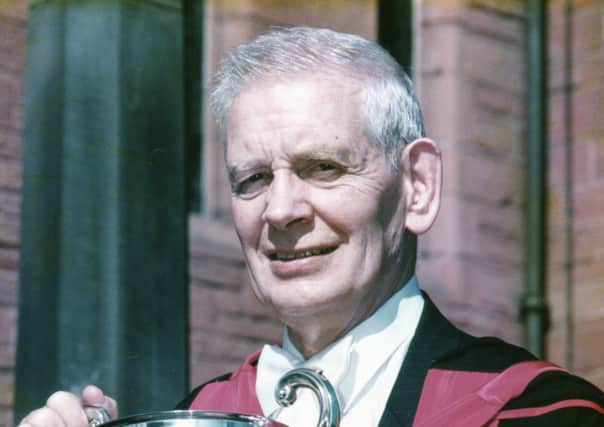Obituary: Professor John Paul, mechanical engineer


Professor John Paul’s research led to greatly improved artificial hips and knees which have helped many patients to recover both greater mobility and a much improved quality of life. Hip and knee replacement operations now avoid many of the medical complications of yesteryear as a result of the research carried out by Paul. He also pioneered a new area of medical care known as gait analysis, which helps in the treatment of patients with problems walking.
His career at Strathclyde University was recognised by colleagues worldwide. He began there in 1962 as a research assistant in the Mechanical Engineering department and assumed its Chair in 1972 and then co-chaired the department from 1977 to 1980.
Advertisement
Hide AdAdvertisement
Hide AdHe remained as the head of department until 1992 and after his retirement in 1992 was appointed an Emeritus Professor. It was a post that Paul filled with customary energy and enthusiasm.
Professor Bernard Conway, Head of the Department of Biomedical Engineering, has said of his former colleague: “John was true pioneer in his field and his early seminal work on the forces transmitted by the human hip joint provided the foundations for modern biomechanics and the successes of joint replacement surgery.
John Paul was born in Sunderland, the son of an engineer draughtsman. The family moved to Old Kilpatrick, near Glasgow, where his father worked in the shipyards. He was a talented pupil at Allan Glen’s School where he was in the 1st XV and won a scholarship to the Royal College of Science and Technology, Glasgow (later the University of Strathclyde), where he read Mechanical Engineering.
He then studied for a degree at Glasgow University. In the early 1960s Paul was asked by an orthopaedic surgeon to submit ideas about how an elderly woman could have pins to secure a fractured femur. His research received such praise that in 1963 a new Bioengineering Unit was inaugurated at the university.
A few years later, when hip replacement surgery was starting in earnest, Paul designed and built in his laboratory in Glasgow a force plate, which measures the ground reaction forces generated by a body standing on or moving across it. This considerably aided the development of the treatment of already pressurised knee bones or hips.
In 1967 Paul extended this research to complete his PhD – Forces at the Human Hip Joint – which was later published and has been greatly influential in academic and medical circles. It has earned the familiar title of “The Paul Cycle” and is still used in the design of hip implants today. Such was his growing reputation Paul was encouraged to develop research into ankle and elbow joints.
Throughout his career Paul remained at Strathclyde and earned an international reputation with his lecturing abroad and prolific contributions to publications. He enjoyed contact with students and made himself available to talk on scholarly matters or discuss medical and engineering issues.
Paul was a good listener and enjoyed arguing engineering matters through with colleagues. From 1982 he was a founder of the new National Centre for Prosthetics and Orthotics at Strathclyde. It is now established as a centre of excellence with particular emphasis on clinically related research.
Advertisement
Hide AdAdvertisement
Hide AdAt a ceremony at the David Livingstone Centre for Sustainability in 2009 in Glasgow Professor Paul received two prestigious honours for his contribution in the field of bioengineering. He was made an Honorary Member of the International Society of Biomechanics and received a Lifetime Achievement Award from the International Society for Technology in Arthroplasty.
Paul received much recognition from academic organisations. He was an enthusiastic member of both the Royal Academy of Engineering and a Fellow of the Royal Society of Edinburgh. Many Fellows recall the memorable lecture that Paul delivered to the latter institution in 1977. From 1987 to 1990 he was president of the International Society for Biomechanics.
Paul’s modest manner belied his diligence in research and determination to help those with painful afflictions. His research and practical ingenuity undoubtedly played a crucial role in developing reliable and pain-free hip replacements. His research has done much to alleviate pain in the elderly and increase their walking and movement.
Paul remained a keen sportsman throughout his life – he played rugby into his 30s and then took up refereeing. He believed that it was his enjoyment of contact sports that led to his needing his own first hip replacement at the age of 51. Typically, he turned his recuperation into a research class. His wife, Bette, found Paul within two hours of his operation walking along a corridor while his students measured his gait.
Paul’s wife predeceased him and he is survived by their son and two daughters.